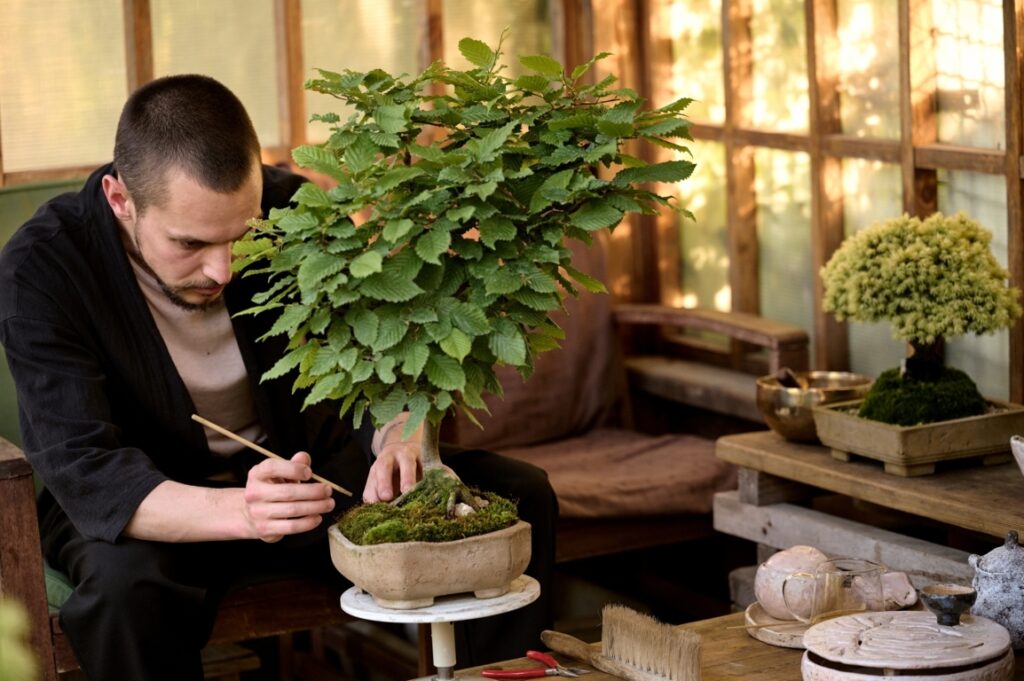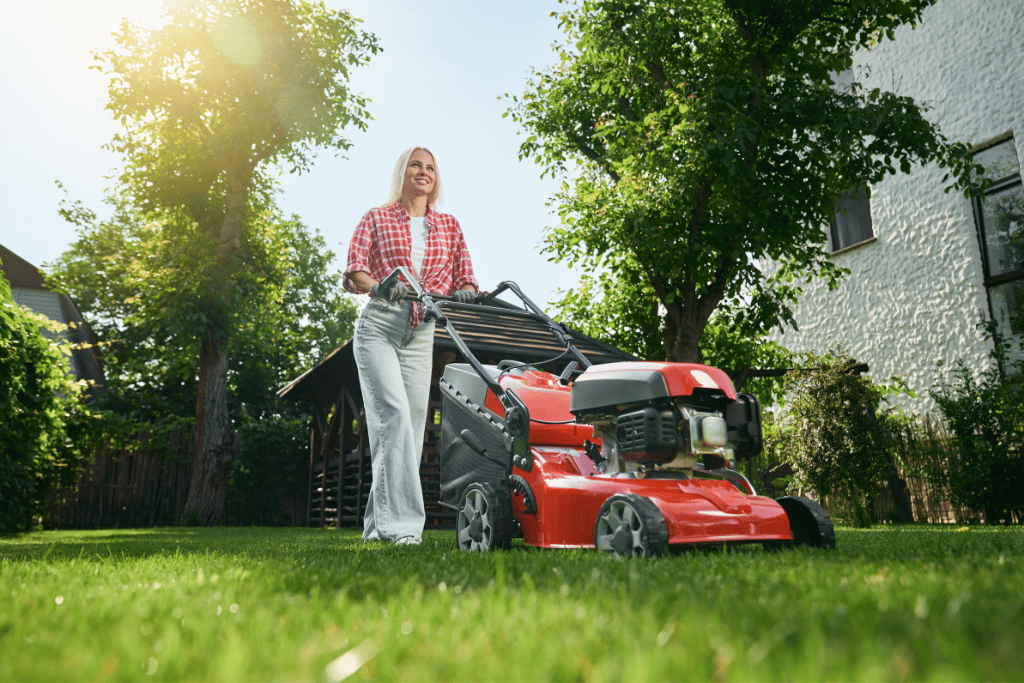
Growing up, I would rejoice to watch the orange gleam begin to appear in the fields. As rotund, oblong and miniature sized pumpkins popped up at stores, farm stands and on front porches of homes, businesses and churches my heart would swell. The arrival of all these pumpkins (especially the jack o’ lanterns) just screamed “Crisp leaves, cool nights, Halloween, Thanksgiving and Fall.”
As the most enduring symbol of autumn, pumpkins have many practical uses other than being a popular seasonal decoration. Their flesh and seeds are nutritional powerhouse foods for both humans and livestock. As they mature, pumpkins produce big blooms that attract pollinators of all kinds and their vigorous vines and broad leaves even serve as a natural mulch.
Pumpkins will grow especially well alongside certain companions, but do conflict with a few plant varieties. Let’s take a closer look at some of the special bonds formed in the garden by these cheerful harbingers of fall.
Positive Effects of Pumpkins as a Companion Plant
Pumpkins consume a lot of resources and can compete with other fruits and veggies in your garden. The positive side of this is that they will help gobble up any excess nutrients that other companions deposit into the soil.
The vines and leaves grow quickly and cover lots of space, making the perfect groundcover. This will naturally smother weeds, help to retain moisture and keep the surface of the soil from overheating, protecting its own roots and those of its companions.
The best implementation of these benefits is what the native Americans referred to as “The Three Sisters.”
The Three Sisters – Pumpkin, Corn and Beans
Maybe the most famous and ideal example of companion planting is the combination of a few native North American crops. Rows of small mounds, spaced 3’ apart, are formed as the home base of the trio. Corn is planted first, in the center of a mound. When the stalks get to be about 6” in height, plant pole beans in a circular pattern around the mound. After beans are planted, sow pumpkin seeds in between the mounds.
If the timing is right, the tall sturdy corn stalks will provide a natural support structure for the beans to grow on. The beans fix heavy loads of nitrogen into the soil, which the corn and pumpkins crave as they grow tall and wide. The pumpkins then begin to spread their vines and leaves, out competing weeds and protecting the shallow roots of the corn and beans.
Et voila! The epitome of companion gardening all in one neat package, consisting of classic garden staples.

Okay. Let’s get started on making your garden into a joyful gathering of pumpkins and their dear friends.
Summer Squash/Zucchini
Pumpkins and squash are botanically very similar, which means they thrive under similar growing conditions. Apart from that convenient factor, they require, and attract, the same pollinators. Accompanying your pumpkins with different types of squash will enhance pollination rates, leading to more robust production.

Nasturtium
Squash bugs that love to gorge on pumpkin vines and leaves are effectively repelled by the dainty, vining flower, nasturtium. On top of warding off bad bugs, nasturtium invites beneficial insects like ladybugs. If that wasn’t enough to sell you on the value of this useful plant, keep in mind that the flowers and leaves, not only beautiful, are edible and delicious!

Radishes
Radishes are one of the few root crops that can be interplanted with pumpkins. They are tiny, requiring little space and nutrients, and mature very quickly. The little red roots make for a good diversion. They produce greens that are especially tantalizing to flea beetles, which normally feast on pumpkin leaves. Radishes will also drive off pesky cucumber beetles.

Marigolds
Marigolds team up well with tons of different fruit and vegetable crops. The strong scent tends to drive away nibbling critters, but more important is a biological function of their roots.
The microbiome of soil is quite an active place, bustling with all sorts of microscopic life. Some good and others bad. Harmful nematodes and pesky roundworms are deterred by marigold roots that exude chemicals that repel underground pests. Plant a few marigolds anywhere among the pumpkin vines to ensure a pest free growing terrain.

Lavender
I have a friend that detests the smell of lavender, which I didn’t even know was possible! However, if you’re unlike him and of sane mind, and you enjoy the aroma of the spikey purple blooms, then you’re in for good news. It not only smells amazing and looks pretty, but will draw in loads of bees. All the pollinator activity will certainly help produce a healthy crop of pumpkins.

Marjoram
According to garden lore (a trustworthy source, if you ask me) marjoram will enhance the flavor of pumpkins, if planted among the vines. Even if this isn’t the case, marjoram incidentally, tastes delicious as a seasoning in pumpkin and squash dishes.

Sunflowers
Sunflowers are another North American native, sometimes referred to as “The Fourth Sister.” The beautiful, sunny blooms attract all sorts of helpful pollinators into the garden. They may also distract birds and rodents from pestering your developing pumpkins. For an especially interesting combination, try incorporating this last sister into plantings with the original three.

Korean Mint
This obscure type of mint may just be the best companion for your pumpkins. As common names of plants vary widely, reference the Latin Agastache rugosa to find this specific variety. It’s a relative of common mint and anise hyssop and does wonders as a companion plant.
Korean Mint sends up pleasant purple flowers that draw in different types of hoverflies. The hoverflies lay their eggs and the hatched larvae will prey on typical pumpkin pests like mites, mealybugs and aphids.

Avoid Planting These Crops with Your Pumpkins
Most root crops just won’t jive in your pumpkin patch. Refrain from planting beets, onions and potatoes in the vicinity. The root crops need space and nutrients to size up, and will prove to be a fierce competitor for these resources. It’s best to keep them separated.
Plants in the brassica family (broccoli, cabbage, kale, Brussels sprouts, cauliflower, kohlrabi etc.) should be kept away from pumpkins. They grow too large and consume a lot of the same nutrients, which causes unnecessary competition.
While other types of squash generally get along well with pumpkins, don’t overcrowd them together in tight spaces. All vining plants need plenty of space to roam and thrive. If planting multiple squash and pumpkin together, try growing vertically with a trellis or fence.
Cross pollination can occur between squash, pumpkins, cucumbers and melons, which is generally a good thing. But be aware that if you’re trying to save seeds for next year, the offspring could be a hybridized form, far different from its parent plant.
Read and unveil the truth: How many pumpkins per plant grow!
Pair up Your Pumpkins
While they may be greedy when it comes to nutrients and water, that shouldn’t keep you from providing your pumpkins with proper company. Try mixing in one or more of these companions among the vines. A plant so productive and jolly should never go lonely!
Frequently Asked Questions (FAQ)
Will pumpkins strangle other plants?
The vines of pumpkins grow fast and furious, posing the threat of a tangly mess to other vine-type plants like squash. Pumpkin vines will likely overtake any plant that is in their path. Just keep this in mind and train the vines accordingly.
Should pumpkin vines be pruned?
It’s not required that you prune the vines, but there are a couple situations that call for action. One is to concentrate the energy to fewer vines and fruit, leading to a more abundant crop with bigger pumpkins. Another scenario requiring pruning is when the vines impede on the space of other plants or grow outside of their contained area.
Are pumpkins heavy feeders?
Pumpkin plants grow rapidly, using up large amounts of nutrients and requiring lots of water. It’s important to keep this in mind when choosing the site where you plant them. Regular fertilizing and access to water will be crucial for a successful harvest.
Why are pumpkins left in the field to rot?
Pumpkins can get big, heavy and cumbersome. Especially when they start to decompose. For some farmers it’s common to leave spoiled pumpkins in the field to turn into organic matter that feeds the soil. Fertilizing the field for next year is just one more way they are a faithful companion!



